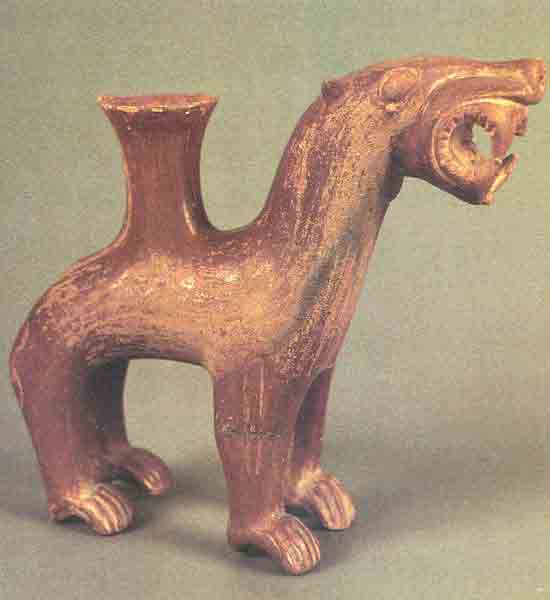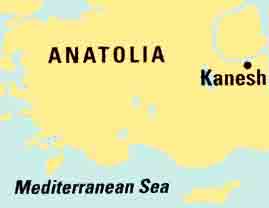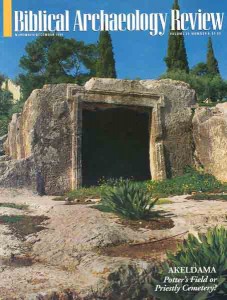
With gaping maw and fierce fangs, this stylized lion was once used in Hittite temple ceremonies. Its function remains a mystery, although presumably wine or other liquids would have been poured into the back of the clay rhyton, or animal-shaped vessel, and then out through the spout-like neck. A common motif in Hittite art, the roaring lion may have represented the god of war. Discovered in modern Kültepe, Turkey—ancient Karum Kanesh, in Anatolia—the ritual vessel dates to 2000–1750 B.C., the period immediately following the arrival of the Indo-European Hittites in Anatolia.

The Hittites brought with them a tradition of polychrome (multi-colored) pottery. However, the local, monochrome style prevailed, as in this example, decorated with only a simple reddish-brown slip. Apparently the regional art was well known and admired: The “works of art and precious objects from Kanesh” are even recorded in a letter from the archives of the great Mesopotamian city of Mari, dating to the early second millennium B.C.
The Hittites disappeared around 1200 B.C.—at the time of Israel’s emergence in Canaan, although numerous Biblical passages refer to Hittites and Israelites as contemporaries.
Already a library member? Log in here.
Institution user? Log in with your IP address.

